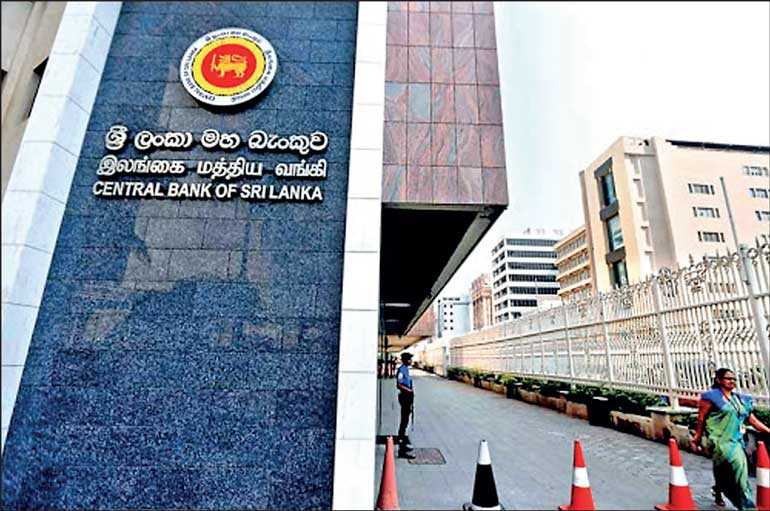Thursday Jan 15, 2026
Thursday Jan 15, 2026
Thursday, 11 June 2020 00:00 - - {{hitsCtrl.values.hits}}

We are now happily and gradually entering into the new normal in the post pandemic era. As economic activities are resuming under various conformance requirements of health authorities, the world is about to face the second shock wave of the massive economic crisis. Nobody knows the magnitude of the recession which is expected to be the biggest in 100 years.
to face the second shock wave of the massive economic crisis. Nobody knows the magnitude of the recession which is expected to be the biggest in 100 years.
The time and space the crisis is going to occupy will be much extensive than we anticipate. The World Bank and many other authorities have already predicted a negative economic growth and possible collapse of some economies as consequences. Therefore, it is inevitable that the local economy too will be affected. Being the industry that fuels the economy the banking and financial service industry should immediately take appropriate measures to safeguard the industry and the economy.
How to become resilient in a crisis of this magnitude as individual entities is a major challenge. On the other hand, how to be instrumental as a catalyst in safeguarding the economy is a daunting task as your stability is very much dependent on the economy. This article attempts to highlight an important strategy banks should immediately focus on which is hardship management.
Temporariness and patchwork
In the past, probably decades back, we had long stable periods which suddenly affected by a catastrophe for a short period. We all are now experiencing the reveres of it where the period of stability is drastically coming down and the frequency of unfavourable events and their prevalence are going up. This temporariness requires serious attention of policy makers, entrepreneurs and managers. The number of devastations both manmade and natural are increasing and the way we have been managing the institutions and economies demands swift changes.
We should not treat this as a one-time patch work to overcome the consequences of the COVID-19 pandemic. We must accept the fact that the local banking and finance industry was facing the challenge of increasing non-performing loans even before the pandemic. Similarly, it should be noted that the policy measures taken to pro-actively manage such a situation was not adequate. Hardship management and vulnerability analytics are not new to the banking sphere. In advanced economies such best practices are made available with varying degrees of automation. With the anticipated global economic downturn and the temporariness in economic cycles it is not prudent to have ad hoc solutions to address this. Each and every bank should have a single contact ideally a department to manage borrower hardships and latest technologies available can add an array of benefits including predictions, vulnerability analytics and by releasing employee stress in handling this inherently challenging task. Ideally, new policy imperatives should replace the old school approach in combating the forthcoming global economic downturn.
The process
The process of hardship management and vulnerability analytics begin with the identification of customers who are experiencing payment difficulties. Identification can be through automated behavioural analytics or relationship driven. Hardship assessment by the bank is the next step where the evidence is identified and analysed. It could be something internal such as bad health conditions including mental issues or an external reason such as loss of income due to termination, affected business or unexpected losses.
The assessment should be completed from the bank end to notify the client with in an agreed time frame after carefully going through documents submitted as proof. In case, the assessment result suggests that the hardship is permanent the bank will proceed with recovery actions such as repossession of assets, etc. If the hardship is found to be temporary in nature the assessor should decide the treatment. Readers should note that such activities can be automated where human intervention can be made minimal. The final step is the review of the situation at the expiry of the agreed concessions such as grace periods, moratoriums and rescheduling where the bank will decide whether the hardship is reversed or the concessions to be extended for another limited tenor. Hardship management and vulnerability analytics demand a shift in our attitudes towards banking. This is empowering customer to engage in an effective dialogue with the bank before things go wrong. The relationships will be stronger, customers are heard and there will be less pressure on banks from regulators and political or social circles. This is not something new to the world and it is only an attempt to introduce a best practice available in developed countries that can bring multiple benefits to all stakeholders.
The need for a collective approach
Enabling customers to communicate officially with regard to their hardships in repaying the advances in a traceable manner on an interactive platform is the need at this juncture. Engaging customers throughout the recovery journey is a costly and challenging affair right now. It is very likely that those who default will be less engaged with an active dialogue with recovery staff. However, announcing a hardship management department, a single reporting point or preferably a portal can create a new culture in the industry where customers will also feel that they are heard by the bank. This is a very proactive measure to monitor advances even before they are tagged as overdue or non-performing.
Technology based solutions available with latest technologies such as robotic process automation, data mining and artificial intelligence can certainly bring enormous benefits to all stakeholders. With a proven track record in providing time-tested home-grown solutions in delinquency management, the writer is of the strong opinion that local talents can make the automated hardship management a reality for local banks at an affordable cost and in a timely manner. What is important is a collective approach by all banks supported by the policy authorities.
The way forward
I am of the strong opinion that a top down approach is more desirable in implementing this across the BFSI sector. The regulator has a legitimate and ethical obligation in playing the role of the catalyst in the total process. After all, you are addressing here the fate of the total economy that is about to face the biggest recession said to be the worst in hundred years.
Certainly, what we have been doing in the past cannot withstand such a shock emanating from the external environment. An isolated effort from banks with the attitude of if you borrowed you better repay can lead to irreversible damages. The need of the hour is a collective effort where borrowers are also actively engaged in the process of making the total system resilient for which a paradigm shift is needed. Instead a pulling effect from the banks a pushing effect from the borrowers is undoubtedly more desirable in a recession to keep the economy intact. Given the local talents available in engineering world class solutions, Sri Lanka should ideally plan a common platform as a future step in this relatively new practice of hardship management and vulnerability analytics to make it more efficient, effective and sustainable.
Conclusion
The unknown magnitude of the post pandemic economic crisis demands swift action by policy authorities. Not taking adequate measures is a passport to failure. The banking and financial services industry, being central and instrumental in protecting and managing the economy while maintaining its stability, is now facing the challenge of preparing for the worst. This article attempted to elaborate on hardship management as an immediate area the Sri Lankan banking and financial service industry should look into. The changes and new implementations demand active participation of policy authorities that includes the treasury and the Central Bank and also key decision makers in individual financial institutions in the country. I unconditionally pledge my support to be instrumental in providing technology inputs both in policy and operational level in this relatively new domain of hardship management and vulnerability analytics.
(The writer is Director/Chief Technology Officer, Avonet Technologies. He is a seasoned BFI solutions architect with a track record of over 17 years in designing, developing and implementing award-winning software solutions in Sri Lanka and the region. He is a software solutions architect by profession and possesses a wealth of expertise and experience in secure electronic payments, delinquency management, channel innovations and vulnerability analytics and management in the domain of banking and financial services industry. He can be reached on [email protected].)